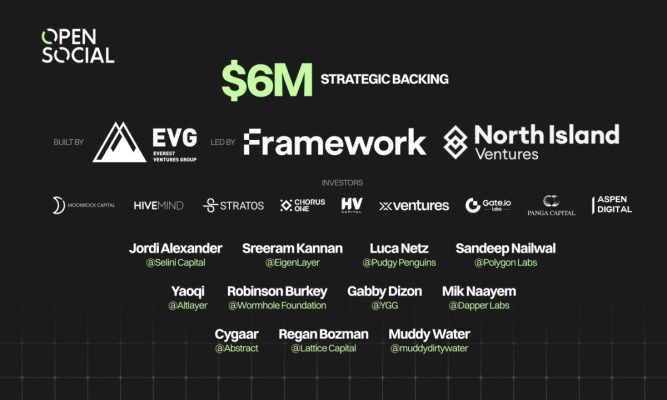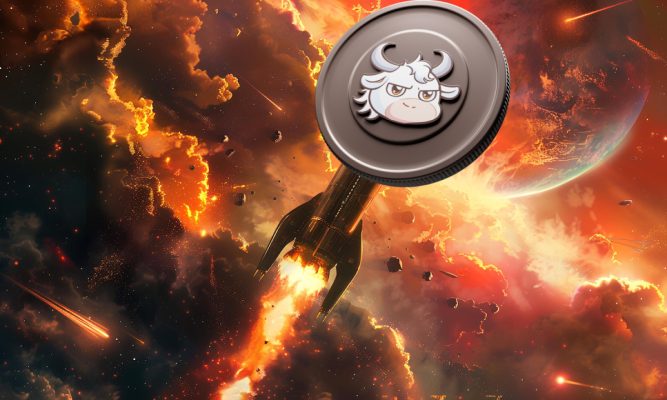Decentralization is finding its way within the content streaming industry as well.
As mainstream platforms face increasing costs for delivering high-quality content and continuous complaints regarding buffering, projects like Theta Network employ blockchain to revolutionize content deployment to the internet.
And as content creators and content demand continuously rise, Theta supplies a need for decentralization and better service.
Furthermore, content creators earn more from streaming their productions in this environment, and content watchers earn tokens for viewing.
What is Theta?
First, let’s get this out of our way. The Theta denomination is not exclusive to crypto.
Theta (uppercase Θ / lowercase θ) is a letter in the Greek alphabet used in math to represent an angle and/or the growth of different functions. The notion is also used in computer sciences, meteorology, and Finance (mainly but not limited to trading).
Theta in Finance
In Finance, according to Investopedia, Theta refers to the rate of decline in the value of an option due to time passage. It’s usually employed to determine the risk of loss of value for an option before it reaches maturity.
In trading, Theta affects the option buyers and the sellers differently.
Option sellers usually profit over Theta decay, while buyers will likely take a loss. But that’s not always the case, as this rate of decline in the value of an option is non-linear, especially when it gets closer to expiration.
The Theta Crypto
As for Theta Crypto, it is the current leader in the decentralized video streaming space.
For traders, the project is primarily known for its performant Theta token.
For end-users (especially gamers and crypto enthusiasts), it’s known for the content streaming platform, Theta.tv.
And for tech folks, Theta is known for the ambitious technology that aims to create a decentralized video streaming platform using blockchain that can integrate with current popular content-streaming brands.
Theta and decentralized TV
Theta is a project initiated and developed by Theta Labs. The company is based in San Francisco and specializes in decentralized video streaming.
The project started in 2017 to solve the issues they were bumping into with their first video streaming platform, Theta.tv.
Since 2019, Theta Labs has managed to host its streaming platform within a network of nodes and create its own Theta blockchain. Furthermore, the project’s fast pace brought improvements, with Theta being ready to launch Mainnet 4.0 and the Theta Metachain SDK by the end of 2022.
The decentralized TV solution, Theta, proposes to stream 4k and 8k video content with minimal buffering at a minimal cost. That is achieved by broadcasting video streams using a network of local nodes that catch video data and relays streams to viewers.
The nodes are incentivized to participate in the network with the Theta Fuel token.
TFUEL works a lot like Gas on Ethereum. It is used to pay fees on the Theta blockchain and can be staked and earned by content creators to provide their work on the platform and by viewers for simply watching streams or opening reward boxes.
Besides Theta.tv’s streamed and hosted content, Theta has also developed a network of edge nodes that relay video on a peer-to-peer stream basis that cannot be censored. But more on that later.
Mainnet 4.0 and Theta Metachain SDK
Regarding the Theta platform, the introduction of Mainnet 4.0 and Theta Metachain will offer some innovation. With this need for innovation and expansion, Theta’s primary protocol grows as blockchain technology improves and Web3 business models take over.
Theta Metachain offers a network of blockchains, a “chain of chains,” with the purpose of enabling permissionless horizontal scaling of the Theta blockchain network in order to reach potentially limitless transactional throughput or even subsecond block finalization time.
Therefore, the Theta Metachain is connected entirely with the Theta video infrastructure, which includes the Theta edge network, ThetaVideoAPI interface, and NFT-based DRM for media ownership and identity management.
Theta’s mission is to build the ideal blockchain for all media makers, ranging from tiny to mid-sized video platforms to worldwide entertainment corporations to individual amateur artists. Theta Metachain refers to a primary chain that extends over multiple purpose-specific subchains. In this scenario, the main chain refers to the current Theta Mainnet.
Theta Metachain’s “uniformity” is a crucial feature: the main chain and all subchains are EVM compatible, allowing dapp developers to use a consistent programming interface. Like the core chain, each subchain is fueled by two tokens: a gas token and a governance token.
The subchain SDK will have an interchain message channel that connects the subchain to the main chain, allowing crypto assets such as TNT20/721 tokens to travel freely across the chain. With this implementation, the Theta Metachain will be expanded into a zk-rollup (zero-knowledge rollup) by adding a few gadgets, ensuring a greater level of security for the platform.
Theta and Theta Fuel (TFUEL)
Theta and Theta Fuel are the native tokens of the Theta blockchain.
The two tokens are native to the identical blockchain; however, they have different use cases and tokenomics.
Theta token
Theta is used for staking and governance. The Theta token has a max fixed supply of 1 billion.
The staking reward is a 1% yield and will be paid out in TFUEL. Although the APR may seem low, this rate prevents the rapid devaluation of the Tfuel token.
How do you stake Theta?
You only have to deposit a stake in a Guardian Node within the Theta Wallet app. The stake has been reduced from at least 10,000 to at least 1,000 to encourage further decentralization.
As for the enterprise validator nodes, that’s a little more complicated. It involves partnering with Theta Labs on the enterprise level and staking more than a guardian node.
TFUEL token
TFUEL is used for paying transaction fees on the blockchain, earned by Theta stakers, and given as a reward to websites hosting Theta-based streams, content creators, and viewers.
As a usage, TFUEL is the gas token on all subchains, meaning that gas costs on the subchains could be made substantially lower than the main chain.
The merging of the subchains and the Theta Main chain idea will not modify or damage the Theta blockchain’s existing tokenomics in any manner. Subchains, on the other hand, will enhance the usefulness and demand for both Theta and TFUEL.
Subchains, in particular, require Theta tokens as collateral. Subchains ultimately rely on the main chain to preserve their security and integrity, making Theta staked on the main chain more essential than ever. TFUEL remains the basic gas token for all on-chain transactions, whether on the main chain or a subchain.
The TFUEL token started with an initial supply of 5 billion, increasing due to the inflationary mechanism (5% annual rate). Inflation is necessary to cover the appropriate amount demanded by platforms on the Theta Network.
Mainnet 3.0 brought TFUEL an update to allow Edge Nodes to stake their earned tokens and introduce burning for network fees.
The Theta network
Theta Labs developed the Theta blockchain to offer top-notch decentralized streaming services. The Theta network can provide high-quality streams by employing interconnected local nodes.
The blockchain uses a multi-level byzantine fault tolerance mechanism to achieve consensus, creating three types of nodes: Validator, Guardian, and Edge Nodes.
With Theta’s upcoming vision, Mainnet 4.0 will enable Web3 businesses in media, entertainment, and the metaverse to scale up to 10x today’s platforms.
The Theta protocol
As mentioned before, Theta uses a multi-level byzantine fault tolerance mechanism and full EVM compatibility protocol.
In essence, the blockchain achieves consensus and assures security on multiple levels.
The first level, the Validators, confirm transactions as fast as possible, and the second level, the Guardians, verify the secured transactions’ authenticity.
Furthermore, instead of competing against each other to confirm a transaction, the nodes collaborate to determine an operation’s correctness.
On the first level, a maximum of 31 Validators can run simultaneously. On the second level, thousands of Guardians are meant to finish the blocks.
The Validators’ purpose is to produce new blocks in the chain, while the Guardian Nodes have to seal blocks and act to check on malicious or non-functional Validator Nodes.
And while anyone holding 1,000 Theta can become a Guardian, only trusted partners can become Validators. In this regard, we can see Theta as being relatively centralized.
However, the said validators are big companies such as Google, Binance, Blockchain Ventures, and Gumi Cryptos that stake large amounts of tokens and are less likely to sell.
Another type of node present in Theta is the Edge node. The Edge Nodes are assuring the functionality of the Theta Edge Network that provides peer-to-peer streaming.
Users can simply download the Edge Node app to access Edge Streams, cache and relay others’ streams, or stream their content.
Mainnet 1.0 -> 2.0 -> 3.0 -> 4.0
As mentioned before, the Theta blockchain was launched in 2019. That represented the Mainnet 1.0 version of the network.
However, since 2020, Theta has been running on Mainnet 2.0. It came with several updates that added:
- The Theta Live Embed makes it possible for websites to stream content from Theta.tv;
- The Theta.tv mobile app allows mobile devices to become a relay node on the network to share bandwidth and optimize streams for nearby viewers;
- The possibility for Guardian nodes to participate in the block production.
In 2021, Theta was preparing to launch Mainnet 3.0. The third major update focuses on the Edge network mainly.
The Edge nodes are rewarded only for relaying videos, so the incentives are pretty low. Therefore, Theta Mainnet 3.0 aims to give Edge nodes the ability to stake Tfuel and become Elite Edge Nodes to earn more tokens based on network uptime and stake.
Additionally, with Mainnet 3.0, 25% of the fees on the edge network will be burned to create a certain degree of deflation.
As for 2022, it also brings other innovations, namely the Mainnet 4.0 and the Theta Metachain SDK. The Theta Mainnet 4.0 will give new projects the option to run their subchain, and as a result, it can manage and control its governance and tokens. This way, they can build their ecosystems and still benefit from the new Theta Metachain, which is very cost-effective.
Theta Smart Contracts, Ethereum, and NFTs
Theta smart contracts have been available since December 2020. With smart contracts, Theta Labs aims to bring better copyright content management and create an oracle to offer transparency.
The Theta smart contracts will be interoperable with Ethereum smart contracts, facilitating the creation of DEXes, staking pools, and dapps.
By making smart contracts available, Theta also added NFT creation capabilities, allowing the minting of collectibles. And given Theta’s connection to e-sports, NFTs are becoming more and more significant.
Is it hard to create a smart contract on Theta?
Not at all. Anyone can create a new smart contract, namely an NFT, within Theta’s wallet.
Key takeaways
- As mainstream platforms face increasing costs for delivering high-quality content, Theta Network employs the power of blockchain to revolutionize content deployment to the internet.
- Theta is used in Finance to refer to the rate of decline in an option’s value due to time passage.
- In the cryptocurrency space, Theta crypto is the current leader in the decentralized video streaming space.
- The network has two tokens, Theta and Theta Fuel, both native to the Theta blockchain. The two tokens have different use cases and tokenomics. The token is used for staking and governance, while TFUEL is used for fees and soon staking.
- The blockchain uses a multi-level byzantine fault tolerance mechanism to achieve consensus, creating three types of nodes: Validator, Guardian, and Edge Nodes. And although it was launched in 2019, the network will soon be updated to Mainnet 3.0.
- The Mainnet 4.0 and Theta Metachain SDK will soon be released, bringing the options to create subchains and have greater control power of the token and governance.

